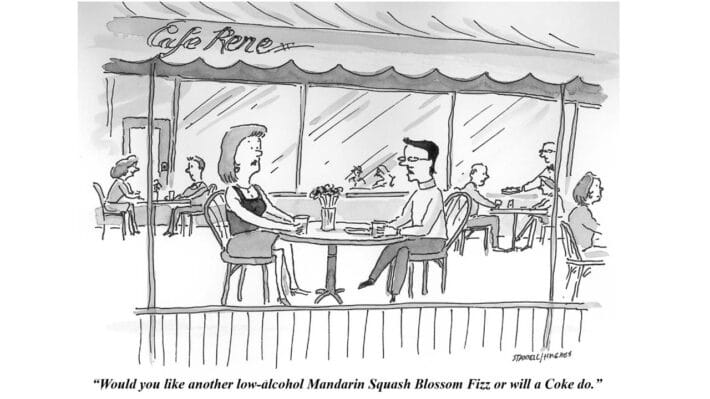Solving the challenge of marketing foreign wine in the U.S.

(I wrote this with the upcoming VinExpoNY in mind but since it applies to so many industries, I decided to post it here.)
With VinExpoNY fast approaching, I’ve been thinking about the challenges in front of thousands of foreign wine producers who are trying to develop and cultivate a market in the U.S. While the challenges are many, I’ve identified three that stand out as major hurdles for any foreign winery wanting to succeed here.
- Competition: The numbers for how many wineries there are in the world and then marketing in the U.S. are all over the place. I’ve seen numbers above 100,000 but I prefer a more conservative number of around 14,000 (6,500 U.S. + 7,500 foreign) because it illustrates the problem and gets the number down to legitimate brands focused on the American market. However, if you figure an average of ten SKU’s per winery, we’re up to 140,000 wines and that’s probably low. The number has been growing as more foreign wineries want U.S. customers. At the same time, importers have been consolidating their portfolios. Competition, in itself, leads to a whole set of challenges that we discussed with 12 leaders in the wine industry at the Wines from Spain Advisory Council that I moderated this past October. Finding and then winning the attention of a good importer is most urgent. Domestic wineries have the advantage of cutting out one level of our three-tier system. While it is difficult, importers will always be interested in a wine that is top quality, has a great story and in a winery that is willing to make a commitment to the market.
- Costs: Success in the U.S. can require a significant investment in logistics, marketing, travel, personnel and more. (You already know this if you’re an experienced trade show exhibitor.) There are ways to mitigate some of the costs through consortiums and marketing groups but the requirements can seem foreboding. On the marketing side, advertising, PR, digital and social media agencies all offer solutions but their tactics can go out into the competitive mist without being able to identify a specific group of buyers that is responding. Magazines and websites will tell you that they offer an elite group of consumers or trade buyers that read and absorb every ad as if it were candy. The old adage of knowing that half your advertising budget is wasted but not knowing which half applies.
- Customers: Yes, importers and distributors are your customers but if you expect them to take on the entire job of selling to retailers and sommeliers and then raising the awareness and curiosity of consumers, I’ve got a bridge in Brooklyn to sell you. (In fact, I’ll sell you Amtrak, JFK, LaGuardia and Newark airports as well.) Your importer will do the best they can but the job of educating and winning over retail staff requires your support in a big way.
The trade will be more likely to respond if you can help them with their customer: the consumer. Marketing campaigns will help, but see numbers 1 and 2 above for those challenges. If you go head on against the other 14,000+ wineries all doing the same thing, you risk getting lost in the clutter and increasing your costs. Consider an old baseball adage of “hit ‘em where they ain’t”. In other words, look for pathways to each level of customers that the competition isn’t using.
The solution is leverage
The key to marketing wine in a difficult market like the U.S. is acquiring and building leverage that you can use to gain competitive advantage. Acquire leverage with the competition by accessing and building data that they don’t have and that you can use to your advantage. Attain leverage against costs by seeking low-cost, measurable solutions that increase efficiency and get your marketing dollars to go further. Finally, create leverage with customers by building and engaging large groups of trade buyers and consumers, that you can specifically identify, address and measure down to the individual.
One of the striking things about the wine industry is the amount of content that everyone owns. By that, I mean the stories you tell about your wines and winery, your traditions and history, the recipes and wine pairing suggestions, your websites and social media channels, your people and more. Every winery marketing in the U.S. including domestic wineries owns a tremendous amount of high quality content. It’s extraordinary and seemingly endless. The problem is that virtually nobody owns a channel that goes directly to the people you need to influence. You need to own a channel.
How do you do that? Well, that’s what we do and if you contact us, we’d be happy to tell you how.
(Jon Stamell is founder of Oomiji and can be reached on Linkedin or at jon@oomiji.com)



